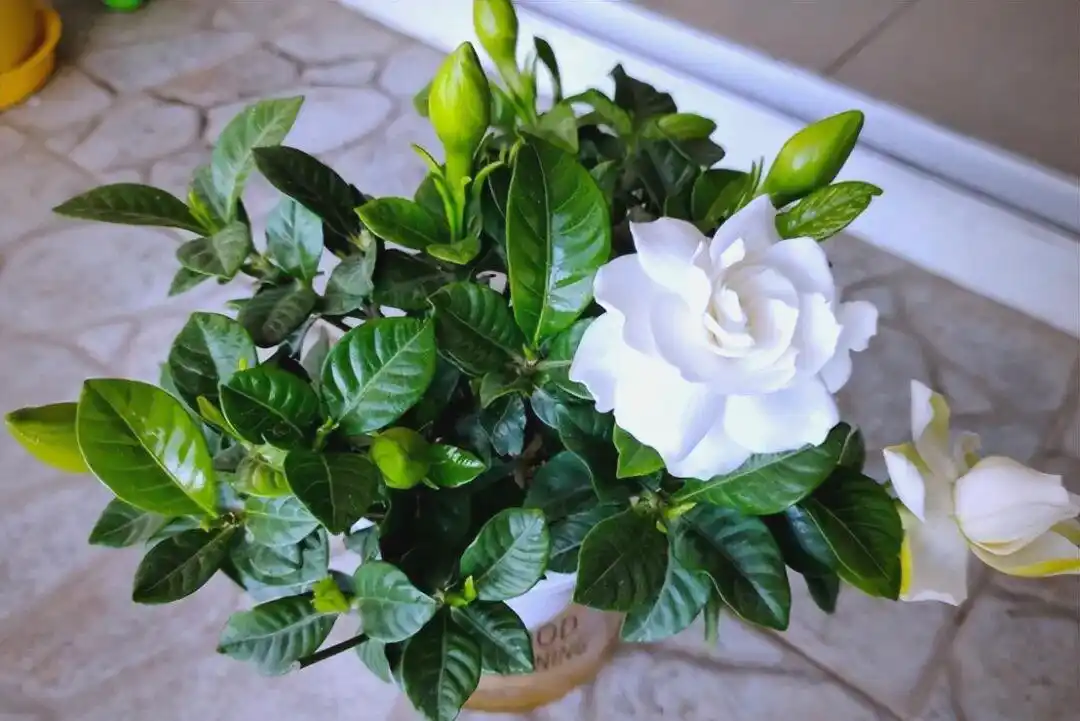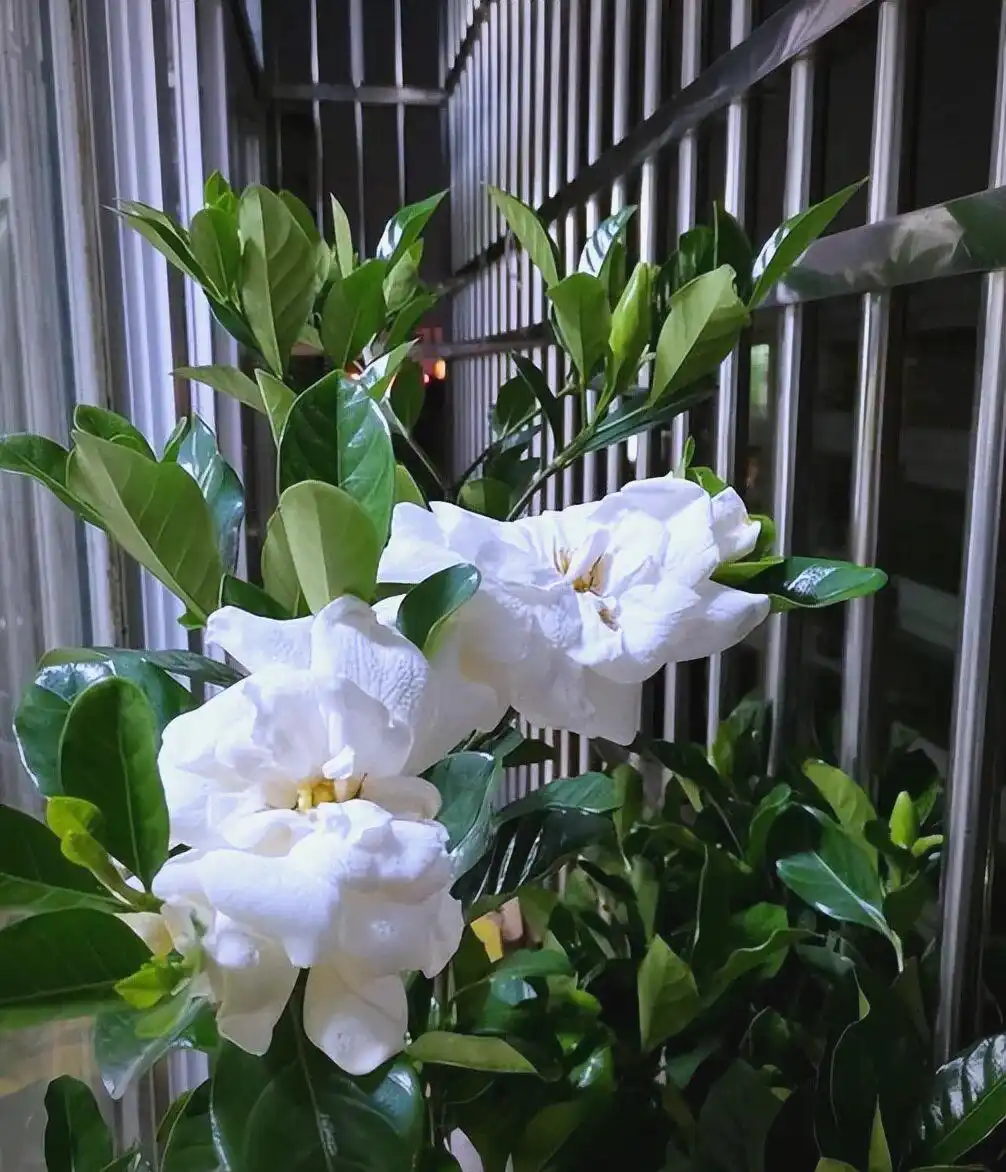Gardenia, with its snow-white flowers and rich aroma, has become the "white moonlight" in the hearts of countless flower friends. However, this "delicate beauty" often shows yellow leaves, falling buds and even dies due to improper maintenance. This article combines the practical experience of senior flower friends with botanical principles to summarize a scientific maintenance system to help you easily grow gardenia with luxuriant leaves and fragrant flowers.

1. Soil: Acidic environment is the lifeline.
Gardenia is a typical "acid plant" that has strict requirements on soil pH and needs to be maintained between 5.0 and 6.5. The water quality in the northern region is quite alkaline, and long-term irrigation may easily lead to soil hardening and iron-deficient yellowing of leaves (green veins and yellow mesophyll).
Soil matching plan:
General formula: 4 parts of legus soil +3 parts of peat soil +2 parts of coarse coconut shell +1 part of perlite, which not only retains water and is breathable.
Improved alkaline soil: Add 10% sulfur powder to the garden soil, or add 50 grams of decomposed pine needles to each pot to continuously release acidic substances.

Guidelines for pit-avoidance: Ban heavy yellow mud. This kind of soil is prone to water and rot roots, causing plant death.
2. Watering: The golden rule that
gardenia likes to be wet when it is dry but avoids standing water, and follows the principle of "when it is dry, it is wet when it is wet." By observing the depth of 2 cm on the surface of the basin soil, replenish water immediately when drying to avoid drying out the roots due to half of the water.
Seasonal management:
Summer: Pour water once in the morning and evening, spray water on the leaves to cool down during high temperature periods to prevent the leaf tips from being scorched.
Winter: Keep the soil slightly moist and choose to water at noon when low temperatures to avoid frostbite on the roots.
Improvement of water quality in northern China: Use tap water after drying for 2 days, water ferrous sulfate solution (1 gram to 1 liter of water) once a month, or use fermented rice washing water instead of clear water.
3. Light: The artistic gardenia that balances light and heat
is a "sunshine lover". It is necessary to ensure 6-8 hours of direct light every day in spring, autumn and winter. Insufficient light will lead to excessive branches and failure of flower bud differentiation.
Shade in summer:
Use a 3-pin sunshade net to block 50% of the light at noon, or move to a well-ventilated and *tered place.
Experimental data: The leaf temperature of gardenia under continuous exposure can reach 40℃, which can easily cause sunburn and appear brown spots.
4. Fertilization: Precise feeding of gardenia with thin fertilizer and
frequent application requires a large amount of nutrients during its vigorous growth period, but it is forbidden to burn roots with thick fertilizer. Adopt a differentiated fertilization strategy of "nitrogen fertilizer during the growth period, phosphorus and potassium fertilizer during the flowering period".

Four seasons fertilization plan:
Spring (March-April): During the germination period of new buds, apply nitrogen, phosphorus and potassium balanced fertilizers (such as 1000 times compound fertilizer) every 10 days to promote the growth of branches and leaves.
Bud pregnancy period (May-June): Change to apply high-phosphorus potassium fertilizer (1500 times potassium dihydrogen phosphate +1000 times Huaduo No. 2 solution) once a week, spraying leaves and irrigating roots.
Autumn (September-October): Stop fertilization and allow the plants to accumulate nutrients for the winter.
First aid measures: If the leaves are severely yellowed, spray them on the leaves with 800 times iron chelate solution. It will take effect in 3 days and recover twice in a row.
5. Pruning: Scientific pruning with a scalpel that creates a perfect plant type
can regulate the growth rhythm of gardenia and promote flower bud differentiation. It is necessary to grasp the three major principles of "cutting after flowers, thinning in spring, and repairing shape".
Operating points:
Post-flowering pruning: After flowering, cut off the remaining flowers and 2-3 pairs of leaves under the flowers to promote the germination of lateral branches and increase the amount of flowers next time.
Spring branch thinning: Remove dense branches, inward branches, and weak branches in March every year to maintain ventilation and light transmission to reduce the breeding of red spiders.
Shape t*: The leaf-leafed gardenia can be trimmed into a sphere, and the leaf-leaf-leafed gardenia can retain the main pole to create a lollipop tree shape to enhance its ornamental value.
6. Overwintering: Survival wisdom based on differences between north and south.
Gardenia has weak cold resistance, and maintenance strategies need to be adjusted according to regional differences.
Northern region:
Move indoors in mid-October, keep the temperature at 5-15℃, and stay away from heating outlets (to prevent drying and falling leaves).
If there is insufficient indoor light, use LED plant fill light to illuminate it for 4 hours a day to avoid long and thin branches.
Southern region:
The roots of ground-grown plants are covered with straw or pine needles 5 cm thick, and the branches and leaves are sprayed with 500 times potassium dihydrogen phosphate solution to enhance cold resistance.
The potted plants are moved to the lee and the sun, controlled water and stopped fertilization, and sprayed warm water to the leaves when the noon temperature is>10℃ to prevent dryness.
7. Common problems First aid kit
New leaves are yellow and old leaves are normal: lack of acid and iron, immediately water ferrous sulfate solution (1:1000) for 2 consecutive times.
The buds fall before they open: if the air is dry or the fertilization is improper, spray water around them every day to increase humidity, and stop applying nitrogen fertilizer during the bud period.
Black spots and rot on leaves: High temperature and high humidity cause bacterial infection, remove the sick leaves in time, spray 800 times of mancozeb solution, and strengthen ventilation.
Conclusion: Conservation is a gentle dialogue.
The essence of gardenia conservation is the process of establishing a deep connection with plants. When you learn to observe the spread angle of leaves, feel the change of soil moisture, understand the growth language of branches, you can really master this green art. Remember: there is no gardenia that is not well maintained, only those who have not found a way to raise flowers. From today on, arm your flower cultivation journey with science, and let gardenia bloom with the purest fragrance under your care!